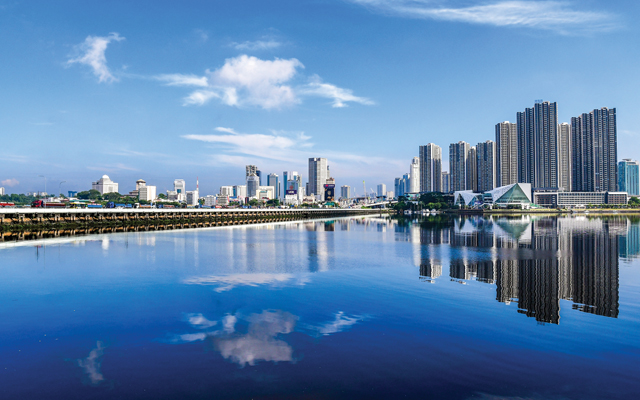As Johor prepares for Visit Johor Year 2026, it is positioning itself as a key player in Malaysia’s broader tourism strategy. With enhanced infrastructure, direct flights, and a growing portfolio of attractions, the state is ready to attract an even larger share of international visitors
With strong backing from the government and the local travel trade, the southern Malaysian state of Johor is gaining more attention in the space of travel and tourism. It recently played host to the ASEAN Tourism Forum (ATF), South-east Asia’s premier travel trade event.
It was the state’s first such prestigious gathering, which attracted nearly 300 international buyers and 100 exhibitors from across the region. The event featured ASEAN bloc ministerial meetings, technical tours, and site visits that introduced delegates to Johor’s attractions firsthand, including Legoland Malaysia Resort, Johor Premium Outlets, and a city tour of Johor Bahru, the state capital.

Sharil Nizam Abdul Rahim, director of Tourism Johor, told TTG India: “Hosting ATF allows us to showcase our offerings and for the travel trade to experience the destination firsthand. It’s also a valuable networking opportunity to build relationships with foreign travel agents.”
The timing of ATF was strategic, aligning with preparations for Visit Malaysia Year 2026. Johor’s own Visit Johor Year 2026 campaign will run concurrently, leveraging the national initiative spearheaded by the Ministry of Tourism, Arts, and Culture Malaysia.
The national campaign aims to draw 35.6 million international arrivals, up from 31.4 million in 2024, and generate 147.1 billion ringgit (US$32.7 billion) in tourism revenue. Johor’s ambitious targets include welcoming 12 million foreign tourists and generating 42.48 billion ringgit in tourism receipts by 2026, building on its 2024 goals of 22 million tourists and 38.94 billion ringgit in revenue.
Infrastructure upgrades are central to Johor’s strategy to enhance accessibility. The completion of Senai International Airport’s upgrade in late 2023 significantly bolstered its capacity to accommodate international arrivals.
Edwin Tay, chairman of the Malaysian Chinese Tourism Association’s Johor chapter, highlighted the strategic impact of new direct flights introduced by Batik Air in late 2024, including daily services from Johor Bahru to Thailand’s Bangkok and biweekly flights to China’s Kunming. “These flights provide international travellers with direct access to Johor Bahru, without the need to go through Kuala Lumpur or Singapore. It will also attract potential business investors to the state,” Tay noted.
Senai International Airport also connects Johor with major cities such as Guangzhou and Haikou in China; Ho Chi Minh City in Vietnam; Jakarta and Surabaya in Indonesia; Mecca and Medina in Saudi Arabia. To further enhance connectivity, Tourism Johor collaborates with Senai Airport Terminal Services and local authorities to attract more international airlines, offering marketing and operational support to optimise their operations.
Cross-border travel with Singapore, Johor’s largest tourist market, has also been streamlined.
Both countries have implemented QR code systems for faster immigration clearance, reducing land congestion. This initiative stems from an MoU to develop a framework for the Johor-Singapore Special Economic Zone, which includes exploring passport-free clearance.
Sharil highlighted that Singaporean tourists, who often visit for shopping, dining, and leisure, contribute significantly to Johor’s tourism economy. “Singaporeans typically have higher spending power compared to tourists from other ASEAN member countries,” he said.
Other markets are no less valuable, he emphasised, as their travellers tend to travel in large groups, translating into substantial revenue for the travel and hospitality sectors.
Johor’s appeal is bolstered by its diverse attractions, to attract tourists with varied interests.
The Desaru Coast Adventure Waterpark features Kraken’s Revenge, Malaysia’s first water coaster, and Tidal Wave Beach, which generates waves up to four meters high, ideal for surfing. This waterpark is part of Desaru Coast, Malaysia’s first premium integrated destination.
Less than a decade old, Desaru Coast boasts renowned five-star international hotel brands, a conference centre, two championship golf courses, and pristine white sandy beaches along the South China Sea.
Arokia Das Anthony, executive director of The Essence of Asia Tours & Travel, emphasised Desaru Coast’s growing prominence.
“Desaru Coast is a premium development that has quickly become a sought-after destination for both leisure tourism and business events,” he remarked.
“Seven years ago, we included Johor as part of a multi-destination programme with Singapore, Melaka, and Kuala Lumpur. Today, Johor stands on its own as a mono-destination for regional travellers, thanks to its world-class offerings.”
Johor’s tourism evolution reflects a dynamic partnership between the public and private sectors. As the state prepares for Visit Johor Year 2026, it is positioning itself as a key player in Malaysia’s broader tourism strategy. With enhanced infrastructure, new flight routes, and a growing portfolio of attractions, the state is poised to attract an even larger share of international visitors, securing its place as a premier destination in South-east Asia.











